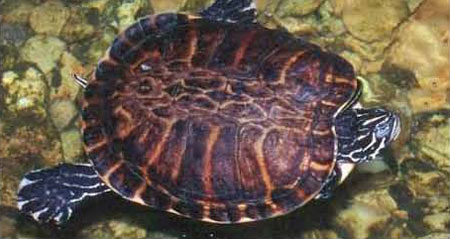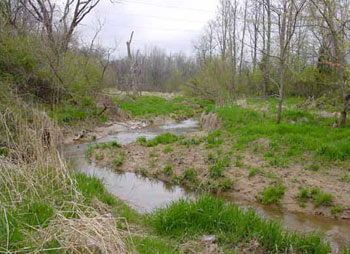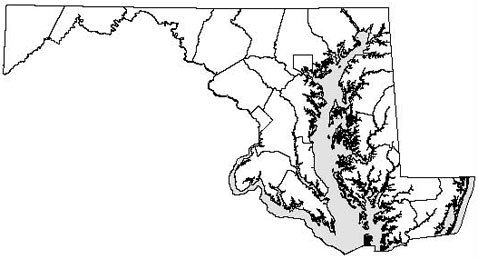Field Guide to Maryland's Turtles (Order Testudines)
Main_Content
River Cooter (Pseudemys concinna) | | Common Name:
|

Photo of River Cooter courtesy of John White.
|
Size: 12 inches - 16.5 inches |
Appearance:This large turtle has an elongated carapace (top shell) which appears brown to olive-brown with orange, yellow or cream markings. This turtle is distinguished from other river turtles by its backward-facing C-shaped markings, yellow to orange surrounded by black or brown, on the second pleural scutes. The shell is also wrinkled with slight serrations along the rear margins. The undersides of the marginal scutes have donut-shaped dark spots. The plastron (bottom shell) is yellowish with varied dark markings following the seams.
|
Habitats:This species prefers slow moving waters - rivers or large streams, ponds, swamps, and marshes - with plenty of vegetation, basking sites and rocky bottoms. It is tolerant of brackish water.
|
How to Find:First, go to Virginia. We have not yet found this species in Maryland but it may be seen in the Potomac River. It is usually found in water, only leaving to lay eggs and bask on logs or rocks at water’s edge. They will bask in the company of other aquatic turtles. Since these animals can breathe without breaking the surface of the water, it may be difficult to see them from land. In a canoe or kayak, drift quietly while focusing just under the water surface.

Photo of Habitat for River Cooter courtesy of Matt Sell.
|
Distribution in Maryland:This is primarily a southeastern species; its range stretches from Virginia to Florida, with some sightings in Indiana. This turtle has not been collected in Maryland but it has been seen in tributaries of the Potomac River in Virginia.

|
|
